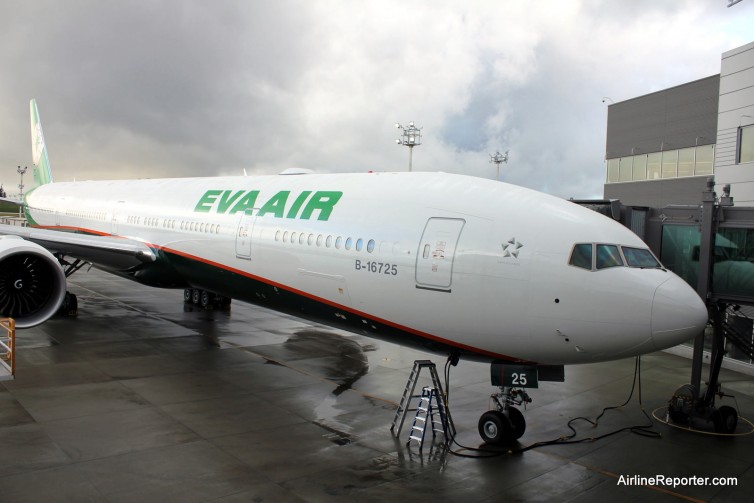
A brand-new EVA Boeing 777-300ER, currently the most popular 777 variant, at Paine Field (with nine-abreast economy)
In October 2015, it appeared that Cathay Pacific was ’˜flirting’ with the idea of changing its long-haul 777 economy class from a 9-abreast to a 10-abreast cabin. This appears to be correct, since Cathay Pacific gauged the responses of some of its most loyal Marco Polo customers in a recent survey to see whether they would accept a 3-4-3 configuration on their long-haul 777 aircraft.
BONUS: Flying a Cathay 777 Across North America in Business Class
’œTo understand the needs of our customers as well as the trend and development of the airline industry, Cathay Pacific periodically conducts research on different aspects of our offerings so as to continuously improve on our passenger services,’ Julie Jarratt, Cathay Pacific Communications Manager explained to AirlineReporter. ’œCathay Pacific, at this stage, has no decision to change the seat width and seat pitch of our 777 fleet.’
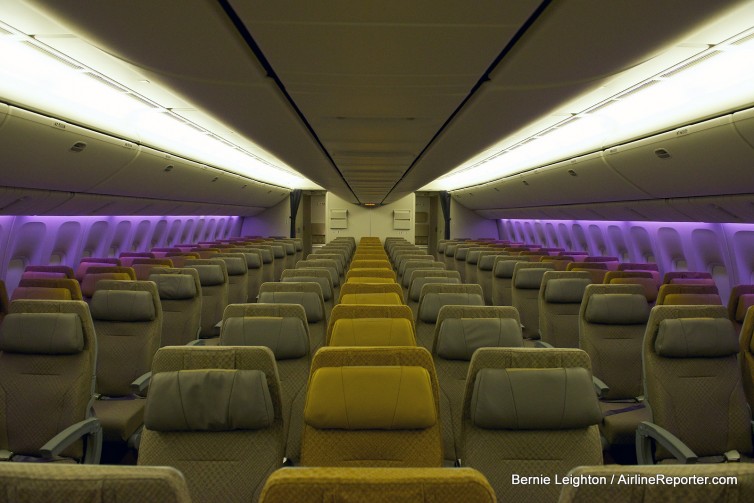
The economy cabin inside a Singapore Airlines 777
From an airline’s perspective, the rationale for a 10-abreast cabin is quite obvious. Not only does it provide a higher profit margin, by lowering its cost per seat mile, but it (theoretically) allows these savings to be put into other benefits for travelers in the form of cheaper airfares or enhanced services. In this sense, a denser cabin allows airlines to move greater numbers of passenger on fewer flights, which leads to fuel efficiency in the form of equated fuel burn reduction savings. I wanted to take a closer look at which airlines are taking delivery of the higher-density 777s, as that configuration is becoming more and more popular.
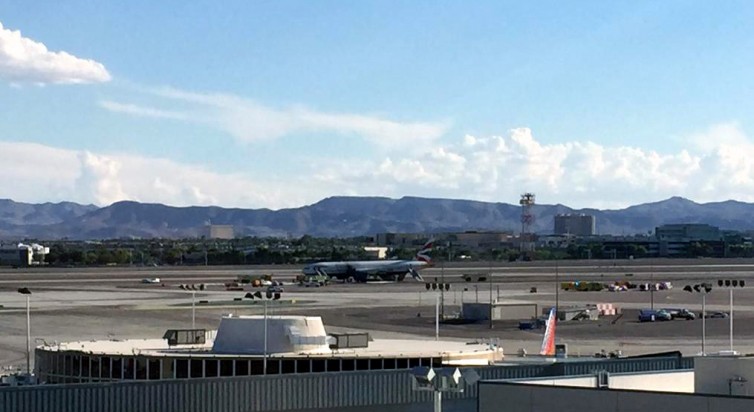
British Airways flight 2276 at Vegas – Photo: McCarran Airport
Today, we at AirlineReporter share two different opinions on passenger evacuations of an airliner during an emergency. In recent incidents, we have seen passengers taking their bags and people reacting. This story shares the opinion that it is not that big of a deal to take your bag and is written by an anonymous writer (that has been verified), who is a frequent flier, no stranger to the airline business, and is a writer. Be sure to read the opposite opinion and share your thoughts in the comments.
First off, I agree that probably it is best to leave your bag on a crashed/burning airliner. However, the attention that I have seen given to passengers who end up taking their bags with them during an emergency sickens me.
These people just went through a major incident, where many likely felt that they were going to die. Could you imagine going through something like that and then instead of having people asking you if you are okay, they harass you? I wouldn’t want that either. It now seems to be the popular thing to do.
If some of you will take the time to get off your high horse and read this, maybe you won’t be so quick to judge. I argue that people shouldn’t automatically be ostracized for grabbing their bag in the middle of a potentially deadly evacuation.
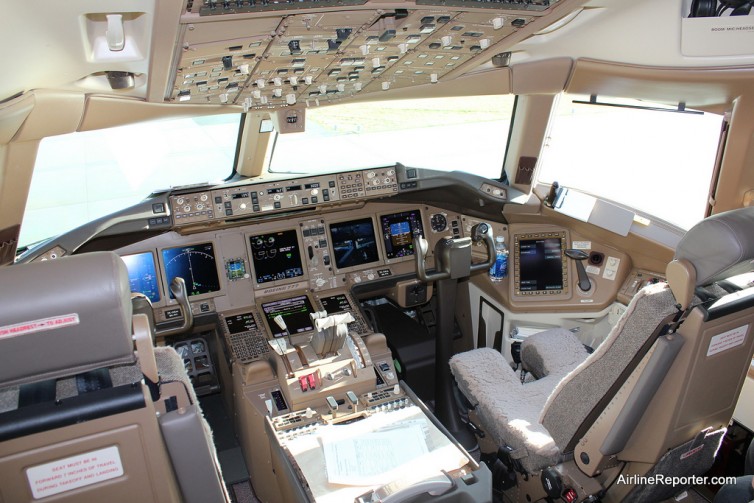
A flight deck of a Boeing 777.
Today, we at AirlineReporter share two different opinions on passenger evacuations of an airliner during an emergency. In recent incidents, we have seen passengers taking their bags and people reacting. This story shares the opinion that passengers should leave their bags and is written by Captain Owen Zupp, who is a published author, journalist, and experienced commercial pilot with over 17,000 hours of varied flight experience. His story was originally published on ThePilotsBlog.com and shared here, with permission. Be sure to read the opposite opinion and share your thoughts in the comments.
The smoke plume from British Airways Flight 2276 was still reaching skywards as people were posting dramatic images across the internet. Both distant shots and photos from passengers were blinking across the globe as fire crews tended to the stricken Boeing 777. It was a day and an event that aviation professionals dread, and yet it is also the very eventuality that endless hours of training have been directed towards.
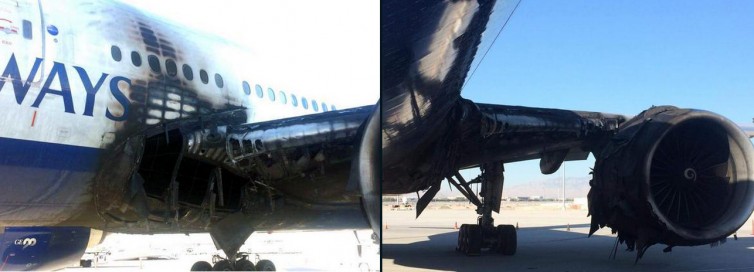
Some of the damage on the British Airways 777-200ER at Vegas – Photo: NYCAviation
On the flight deck, a “rejected takeoff” is a maneuver that is part of every recurrent simulator session for pilots. Crews are tested for a range of scenarios, from engine failure and fire, to tire deflation and loss of visibility. Sometimes, the choice to reject the takeoff is obvious; in others, it is more obscure, such as when the failure occurs at low speed with its own directional control issues, or when the problem arises at high speed when the aircraft is beyond its decision speed, or ’˜V-1’, and the takeoff must continue.
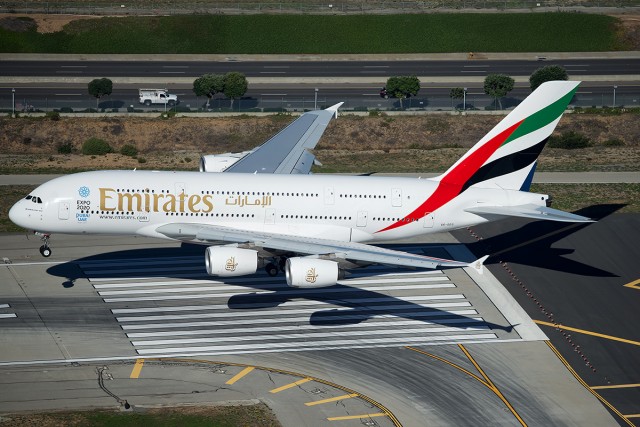
An Emirates A380 landing at Los Angeles Airport – Photo: Bernie Leighton | AirlineReporter
It’s no secret that Malaysia Airlines had a terrible 2014. So terrible that the fate of the airline hangs in the balance. The government, tired of writing blank checks to keep the airline afloat, has demanded restructuring. Hiring Christoph Mueller (of Aer Lingus hatchet-man fame), they were, finally, not going to pull any punches.
Part of this is an impressive (rumored) fleet disposition. Winding down of the entire 777 fleet by the end of next year, complete dissolving of MASkargo, and the biggest elephant in the room of all; removal of their A380s.
Can becoming a regional airline centered around the A330 save Malaysia Airlines? I’m not hopeful, but that’s not what I am here to talk about today.
I want to discuss where the planes are likely to go.
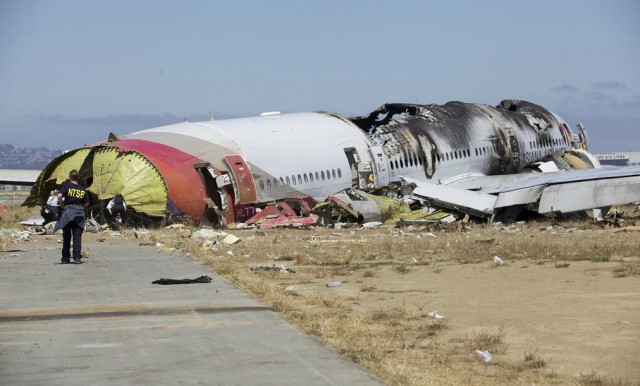
Asiana Airlines flight 214 crash, a Boeing 777 – Photo: NTSB
The National Transportation Safety Board (NTSB) this week released a synopsis of their final report on last year’s crash of Asiana Airlines flight 214 at San Francisco International Airport (SFO). The report lists NTSB’s findings, identifies a probable cause, and makes 27 specific recommendations to Asiana, the FAA, and Boeing – among others. The crash was found to be pilot error – the result of a botched visual approach which culminated in the Boeing 777-200ER hitting a seawall and crashing onto the runway, killing three and seriously injuring dozens.
For anyone who has followed the crash investigation, there were no real surprises in the report. However, there are some interesting takeaways.






